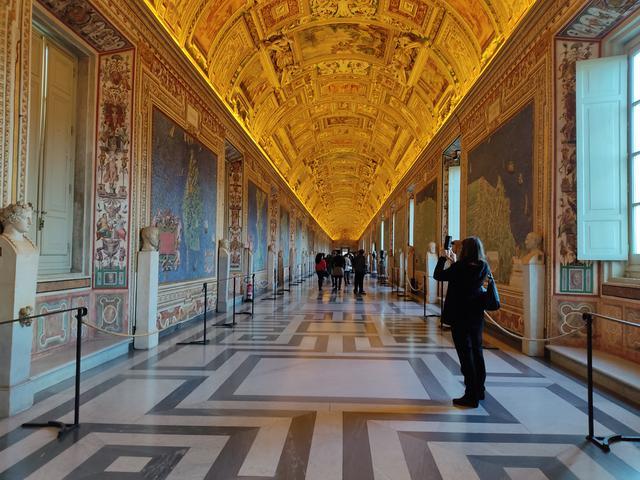Map gallery

The Map Gallery, located within the Vatican Museums, is a true masterpiece of cartography and artistry. Commissioned by Pope Gregory XIII in the 16th century, this stunning room is a visual representation of Italy at the time, akin to a 16th-century version of Google Maps. The gallery spans an impressive 120 meters in length, creating an immersive experience for visitors as they explore the intricacies of the Italian landscape.
At the heart of this grand project was Ignazio Danti, a Dominican monk renowned for his skills as a cartographer, cosmographer, and mathematician. Danti's expertise was instrumental in bringing the maps to life, with each detail meticulously crafted to reflect the geographical accuracy of the regions depicted. The walls of the gallery are adorned with forty letters, adding a touch of historical context to the visual spectacle.
To execute this ambitious undertaking, Pope Gregory XIII enlisted the talents of esteemed artists such as Girolamo Muziano and Cesare Nebbia. Together, they worked tirelessly over a period of three years from 1580 to 1583, transforming the gallery into a living map of Italy. The attention to detail is evident in every stroke of the brush, with the landscapes of Southern Puglia, Ancient Italy, and Avignon (then part of Italy) coming to life before the viewer's eyes.
As visitors traverse the gallery, they are transported through the peninsular Apennine mountain range, which divides Italy into two distinct regions. The play of light and shadow within the barrel-vaulted ceiling enhances the illusion of walking through the mountains, creating a sense of immersion in the Italian countryside. The accuracy of the maps is a testament to the skill and dedication of the artists and scholars involved, with nearly eighty percent of the details aligning with reality.
In conclusion, the Map Gallery stands as a testament to the ingenuity and artistry of the Renaissance period, offering a unique glimpse into the geographical and cultural landscape of 16th-century Italy. Visitors to the Vatican Museums are invited to step back in time and marvel at the beauty and precision of this historic cartographic masterpiece.
© ChatGPT 3.5
*Based on how detailed and extensive it is, the Gallery was built in record time, in just three years, from 1580 to 1583, they painted the maps and made the exuberant decoration of the vault.
*Originally, this Gallery was created to be entered through the door that we currently see in the background.
*The maps use an aerial perspective that resembles what Google Earth currently does, however, at that time satellites or photography of this type did not exist, a detail that makes the skill and skill of its creators more than clear.
*In 1631, by order of Urban VIII, the maps were completed by Luca Holstenios with more decorations.
*In 2016 and after four years of arduous and complex work, the Map Room was restored, recovering its original colors in an extraordinary way.
*After completing his studies in philosophy and theology, as a Dominican friar, Danti dedicated himself to astronomy and geography.